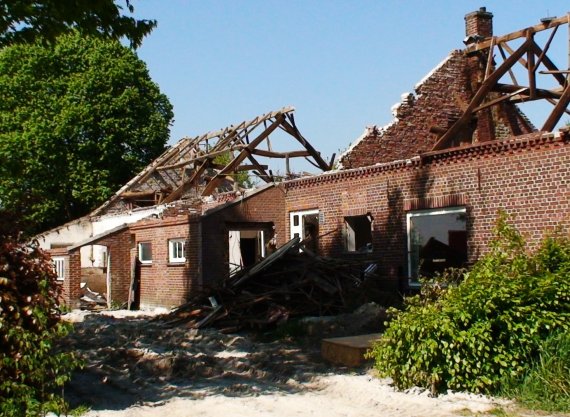Countermeasures must be urgently considered, they write in their report on Dutch agricultural buildings that are falling vacant in rural areas, which was published last Friday.
Over the past 60 years, the Dutch countryside has changed beyond recognition. Whereas there were still 400,000 small farms in 1950, in 2012 just 64,000 remained. And while those who carry on grow ever bigger, every year another 2 percent of all rural companies cease operations. The researchers believe this trend will continue unabated. Which leads them to expect that before 2030 a further16,000 to 33,000 farmers will go out of business. Their calculations are based on a figure of 24,000 closures. That’s how many farmers are older than 50 and have no successor.
The closure of all these 24,000 businesses, the researchers calculate, will cause farm buildings covering an area equal to 6400 football pitches to lose their function before 2030. It is likely that half of these, mainly homes and relatively new animal stalls, will find a new use. The other half, which includes many animal tie-stall barns, will be superfluous. If nothing is done to address this situation, dilapidation will become a very real threat.
New initiatives
Fortunately, the Wageningen researchers see ways in which the problem of vacant properties can be resolved. At present, for example, zoning plans and regulations are often an obstacle when a new function is being sought for redundant buildings. ‘Municipalities and government authorities should have a fundamentally positive attitude towards new initiatives,’ says the chief researcher Edo Gies. In addition, demolition must become a more appealing option. The current incentives are evidently not appealing enough to prompt retiring farmers to knock down their redundant stalls, while demolition is often a desirable option. Many of the buildings are of little historic or cultural significance. ‘These stalls are not characteristic of the region,’ says Gies. ‘They are utterly standard stalls, practical, built of cheap materials and found all over the Netherlands.’
It is unclear how great the problem of vacant buildings is at present, because no statistics are being kept. ‘There are signs from the farming community that farms are less easy to sell than they used to be,’ says Gies, ‘but as yet there’s no clear evidence of empty properties on any significant scale.’

